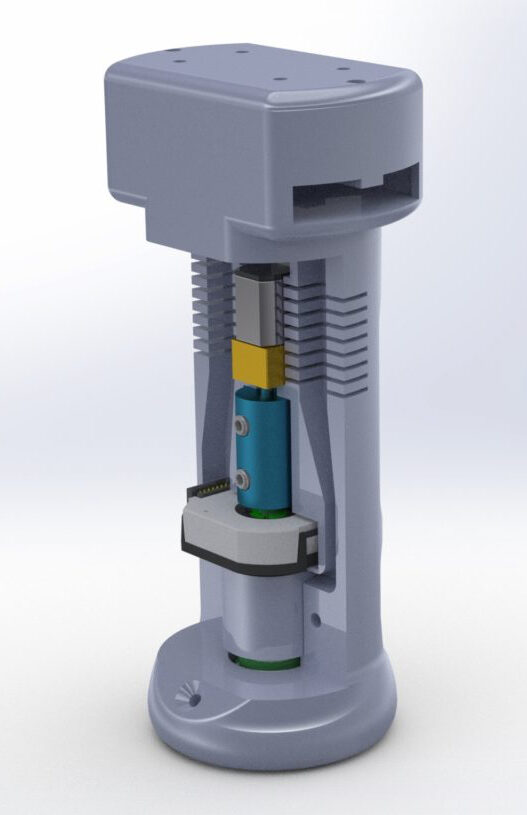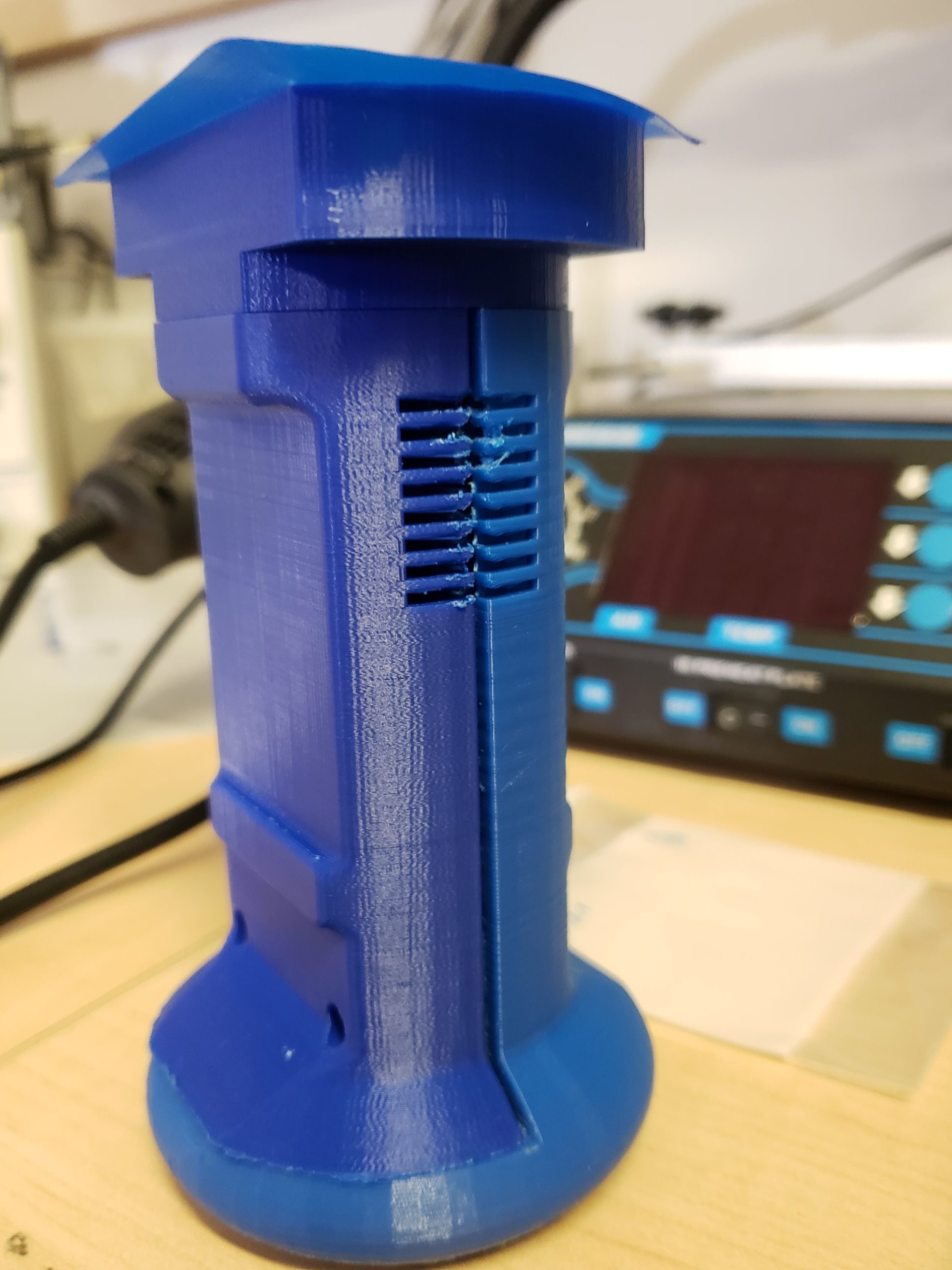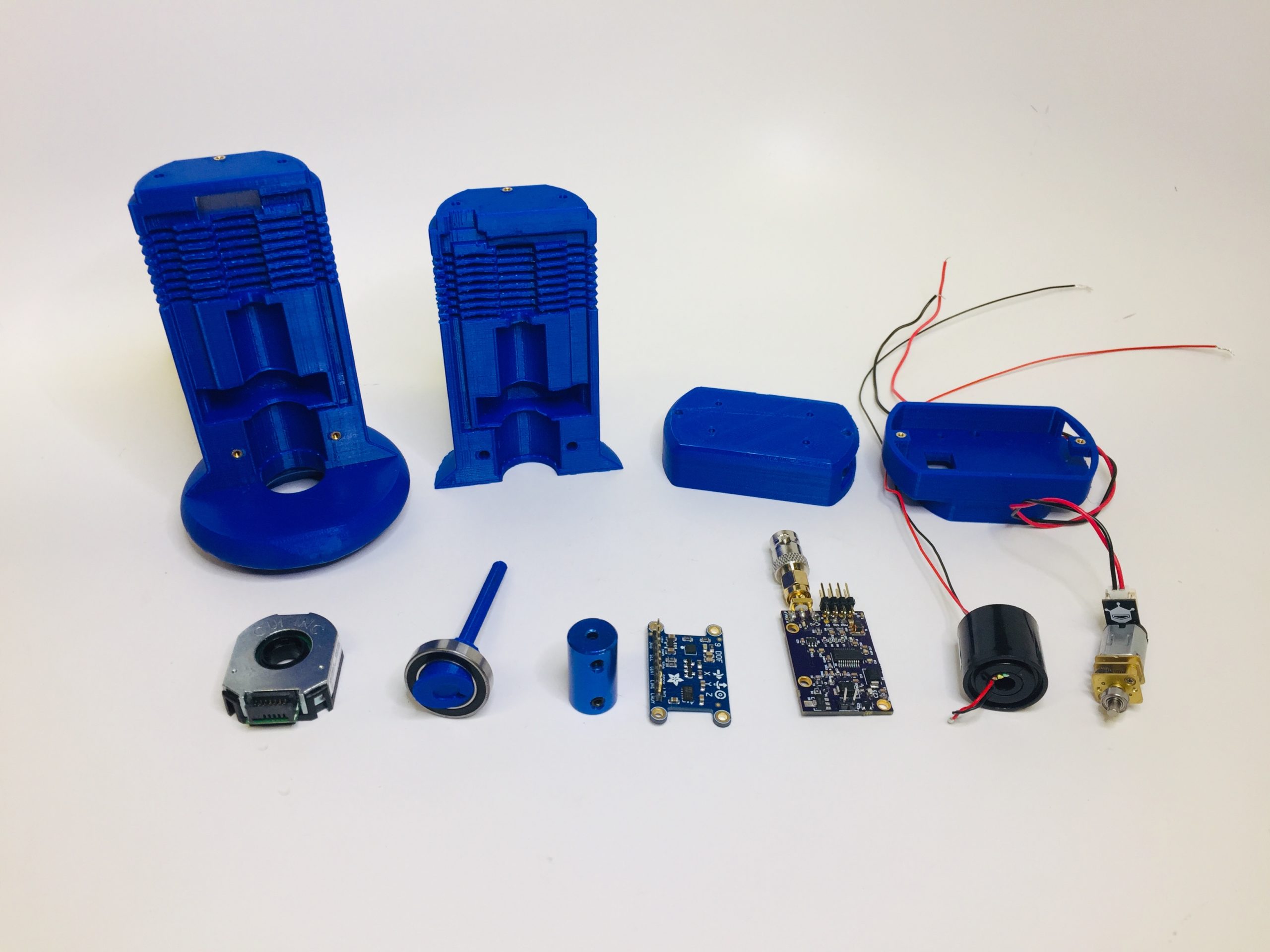
I joined Columbia Engineering’s Creative Machines Lab, headed by renowned robotics professor Hod Lipson in Fall 2019. I worked alongside P.h.D. candidate Yazmin Feliz researching bringing low cost ultrasound technology to developing countries.
The project focused on creating an open source, reproducible, low cost 3D ultrasound probe that can live-scan individuals through a smartphone app. An ambitious project, but exciting new territory in medical & mobile technologies.


Probe Design
The Sono-Ring had many components that all had to communicate with one another. From left to right in the image above, these were: an absolute rotary encoder, a leak-proof bearing, a shaft coupler, an IMU, a piezo signal IC, a slip ring, and a DC motor. Not shown is the piezoelectric transducer which served as the emitter and receiver of the ultrasound waves.
Since ultrasonic waves cannot effectively transmit through air, a medium was needed to act as an intermediate between the piezo and the skin surface. For this, I decided on using mineral oil due to its accessibility and low cost. The design of the probe required an oil-tight seal at the base of the probe, while still having a clear window for transmission.
Setup
The slip ring used added a lot of white noise to the signal, which needed to be heavily filtered before being processed. The motor and encoder combo allowed us to record distance readings and assign them to particular angles.
In the video to the right, you can see the probe in action! ⇒
